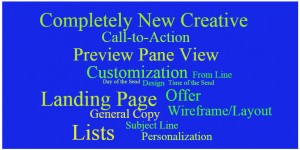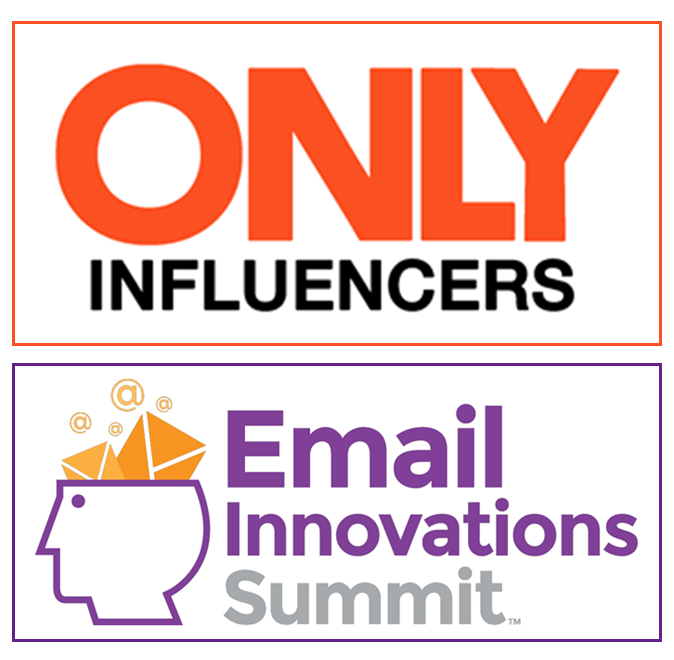Note from Jeanne: This was one of the most popular columns I wrote for ClickZ in 2013. If you’re looking to make your email marketing more effective and more profitable you have to test. As the title suggests, here are 15 types of email marketing tests you should be doing. Enjoy!
I was recently asked to develop a “testing protocol” for a client. The deliverable was a worksheet that would document tests for a particular send, but they wanted it to do more than just that. They wanted it to educate on the value of testing and spur the groups within their organization to truly leverage testing to their advantage.
Not a simple task.
One of my observations, both with this client (who I’ve been working with for more than two years) and with other clients, is the focus on subject line testing. My personal goal, with this project and in general, is to get email marketers to go beyond just testing subject lines and look at other elements that might improve response.
There are a lot of “100+ things to test in email” lists out there. But these leave me a bit flat. Many of the items they list are specific to an industry or type of email, and many aren’t things that will normally drive large increases in response.
So here’s my much-less-impressive sounding list of 15 types of email tests you can do, along with some narration on my personal favorites and least favorites. The list is roughly organized from what generally provides the most to least value in terms of increased performance for the long term.
 Lists
Lists- Landing page elements (which could spur another list of 15 or more)
- Completely new creative (multiple elements)
- Preview pane view
- Customization (targeted content)
- Offer/offer copy/placement
- Call-to-action copy/placement
- General wireframe/layout
- General copy
- Personalization (data merge)
- Subject line
- From line
- Design (fonts/colors/images)
- Time of the send
- Day of the send
Lists
List testing tops my list of 15 because if you aren’t reaching the right audience it doesn’t really matter what content the email carries. This is a broad category – you can test to identify segments of your house list which are more and less responsive to certain offers, and use this knowledge to boost your revenue per email sent by targeting offers. See my recent case study on this.
You can also mail to third-party rental lists to not only boost your immediate performance but also grow your own house list with qualified names via opt-in. Infusing your house list with qualified names on an ongoing basis is a key to success in email. According to MarketingSherpa’s 2013 Email Marketing Benchmark Survey, only 17 percent of marketers have email lists that are growing rapidly. Another 50 percent say their lists are growing slowly, and a third of respondents are seeing neutral to negative growth.
Landing Page Elements
Landing page elements, which you can see could have a list of 15 or more elements of its own, is my second favorite thing to test. Email conversions tend to happen on landing pages, microsites, and web-based conversion funnels. It’s important to keep readers engaged and moving toward the end goal of your email once they click through. Even a small boost in performance here, getting 5 percent or fewer of visitors to convert, can have a large impact on your bottom line. The results of many landing page tests you do can also be applied for future campaigns, in both email and other channels, producing true long-term value for the money spent.
Now on to some of the items at the bottom of my list.
Time/Day of the Send
I’m not a big fan of day and time send tests, nor do I pay much attention to those reports released periodically that tell you the best day and time to send email. I’ve found common sense to be the best guide here. For B2B email, I shoot to have it arrive during the business day based on the time zone of the recipients. For B2C email, I set send day and time based on the audience and when I imagine they’ll have a few minutes to read it, which is typically late afternoon/evening or weekend days. I’ve done day and time testing for clients, but assuming they are starting with a “common sense” control time for their audience, I haven’t seen huge, sustainable lifts.
Design
The same is true for design, which I consider fonts, colors, and images. This is not to be confused with wireframes/layouts, which I have much higher on the list. I love good email design; but I have also found that as long as common sense is your guide, the fonts, colors, and specific images used don’t tend to have a large impact on response. For me, common sense design is about using readable fonts and colors and images that compel readers to the action you want them to take. Testing magenta instead of maroon as the accent color on the email isn’t something that typically provides you a large lift.
A challenge to readers: when you plan your next email test, start from the top (not the bottom) of my list of 15 and choose a type of test that you’ve never done before. Then build the test, see how it does, and let me know!






